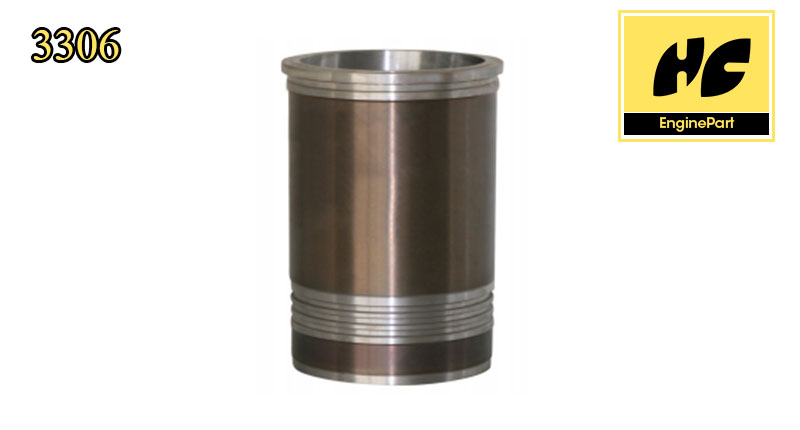What do you know about the bearing?
Motion characteristics
When the plain bearing is working, a thin oil film is required between the bearing bush and the rotating shaft to lubricate it. If the lubrication is poor, there is direct friction between the bearing and the shaft, and the friction will produce a very high temperature, although the bearing is made of special high-temperature alloy materials, but the high temperature generated by direct friction is still enough to burn it out. The bearing shell may also burn due to excessive load, high temperature, impurities in lubricating oil or abnormal viscosity and other factors. The sliding bearing was damaged after the tile was burned.
Bearing bush machining
The thick-walled bearing bush can be cast, and a layer of bearing alloy (called bearing liner) can be poured on the inner surface of the bearing bush to improve the friction performance. In order to make the bearing alloy and the bearing shell attach well, various forms of mortise, groove or thread are often made on the inner surface of the bearing shell. Thin wall bearing can be mass-produced by continuous rolling of bimetal plates.
Powder metallurgy is the mixing of basic materials such as iron or copper in powder form with graphite, and then pressing and sintering forming. Its pores can store lubricating oil, called oil bearing.
Bearing bush material is usually soft, the inner cylinder should not be processed by grinding method, can be processed by boring, diamond boring, scraping or grinding method. The grinding method should not be used to match the shaft diameter, but should use a special lapping rod with the same size as the bearing hole. Scraping is mostly used for partial tile bearings, with a wide blade scraper. When scraping by hand, the scratch should be shallow. Bearing bush with complex inner surface shape should adopt special boring method according to specific shape.
.jpg)
The bearing material is characterized by small friction coefficient, sufficient fatigue strength, good running performance and good corrosion resistance. Commonly used bearing materials are bearing alloy (Babbitt), copper alloy, powder metallurgy and gray cast iron and wear-resistant cast iron.
Non-lubricated bearing bushing materials are mainly polymer, carbon graphite and special ceramics three categories.
polymer
Polymer is also known as organic polymer materials, engineering plastics. Commonly used materials are phenolic resin, nylon, polytetrafluoroethylene (PTFE) and so on. Non-lubricated bearings made of plastics (such as PTFE) can resist strong acids and weak alkalis, and have good embedding, anti-friction and wear resistance. The polytetrafluoroethylene sheet is stamped into lip seal ring, bearing bush, piston ring and gasket, etc., which are applied to belt conveyor, typewriter, sewing machine, record player turntable, water pump, textile machinery and agricultural machinery.
The polymer has the characteristics of light weight, insulation, anti-friction, wear resistance, self-lubrication, corrosion resistance, simple molding process and high production efficiency. Compared with metal materials, their tribological properties are sensitive to ambient temperature and humidity, and the characteristics related to viscoelasticity are significant, so the gap between the bearing bush and the journal is larger. And because of its low mechanical strength, small elastic modulus, poor absorption of lubricating oil, and limit the working speed and pressure value of the bearing.
carbon-graphite
Carbon-graphite bearing can be used in harsh environments. The more graphite content, the softer the material, the smaller the friction coefficient.
Carbon graphite generally has good electrical conductivity, heat resistance, wear resistance, self-lubrication, high temperature stability, strong chemical corrosion resistance, higher thermal conductivity than polymer, and small linear expansion coefficient. The friction factor and wear rate with chrome-plated surface are very low at atmospheric and room temperature conditions. Its self-moistening and antifriction properties depend on the amount of water vapor adsorbed, but will lose lubricity at very low humidity. The wear resistance of carbon graphite can be improved by applying abrasion resistant coating. Carbon-graphite can also be used as a water-lubricated bearing material.
Graphite can not only be used as a solid lubricant, can be added to resin, metal, ceramics and other materials, increase the anti-friction of these materials, but also can be used directly as a friction pair material, such as making paper, wood processing, textile, food and other oil-resistant places of bearings, high temperature plain bearings, sealing rings, piston rings, scrapers and so on. The "class" representative symbol of carbon-graphite materials for mechanical engineering is M, and there are four series: carbon-graphite materials, electrochemical graphite materials, resin carbon composite materials and metal graphite materials.
ceramic
Ceramics are inorganic non-metallic natural minerals or artificial compounds as raw materials, by grinding, forming and high temperature sintering, composed of numerous inorganic non-metallic small crystals and glass phase of non-metallic materials. Traditional ceramics are made of inorganic non-metallic natural minerals, such as clay, feldspar, quartz, etc. Special ceramics are made with artificial compounds as raw materials. The ceramics used in mechanical engineering are generally special ceramics made of alumina, magnesium oxide, zirconia, lead oxide, titanium oxide, silicon carbide, boron carbide, silicon nitride, boron nitride and other artificial compounds.
The properties of ceramics are largely determined by their microstructure, including grain size and distribution, composition and content of the glass phase, and the nature, content and distribution of impurities. The microstructure is determined by raw materials, composition and manufacturing process. The common characteristics of ceramics are high hardness and compressive strength, high temperature resistance, wear resistance, oxidation resistance, corrosion resistance, brittleness, impact resistance and non-ductility.
Ceramic is a new type of bearing material without lubrication, especially SiC and Si3N4, their strength, heat resistance and corrosion resistance are very good, tribological properties are also very good.




.jpg)